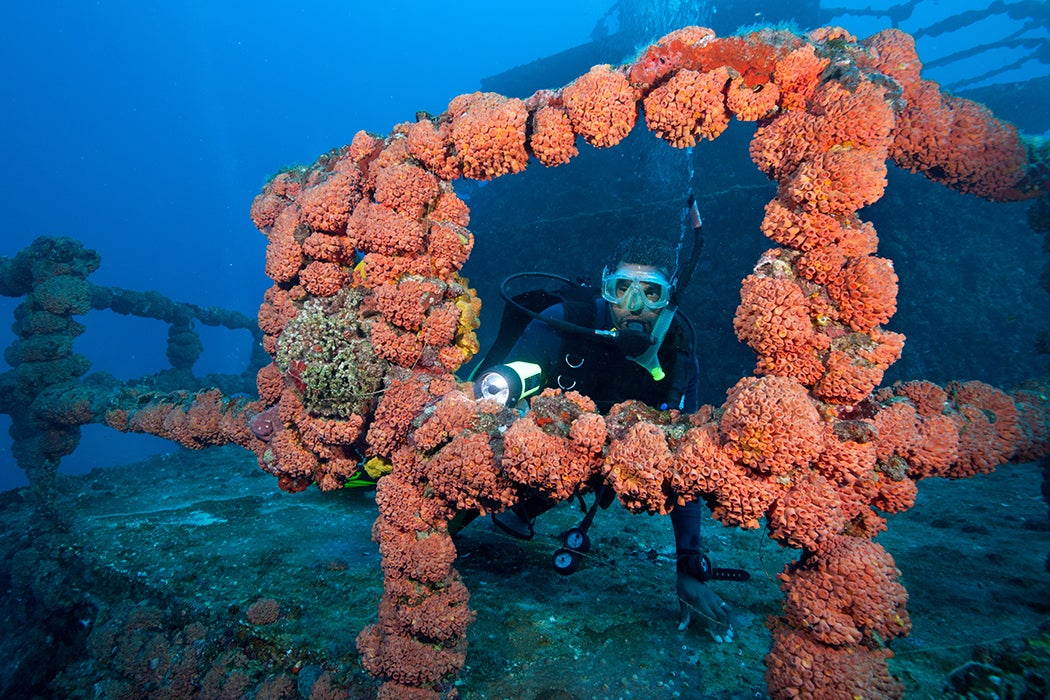When fish stocks decline, can throwing trash into the ocean help them bounce back? Well, sort of, yes. In many areas, authorities are disposing of old objects at sea to provide fish habitats. To create an artificial reef (AR), a large structure such as a ship is cleaned of toxic materials and dumped at sea. These can be anything from sculpted balls of cement to old subway cars. Over time, fish take shelter in the wrecks while sponges, corals, and other organisms begin to grow on them. But one important question remains: do ARs actually grow fish populations?
As laid out by marine scientists Sean P. Powers, Jonathan H. Grabowski, Charles H. Peterson, and William J. Lindberg in a 2003 paper, the issue is whether the fish that populate these structures are new fish, representing a population increase, or whether the fish are simply drawn into one location from the surrounding area. The authors take particular issue with the use of ARs as mitigation for damage done to other habitats. Gaming out all possible scenarios, they calculated that an AR will likely have no net impact on fish populations. The authors calculated fish would aggregate to a modest improvement of around 6.5 kg of fish per 10m2 of artificial reef. Unfortunately, this increasing congregation of fish would make them easy to catch, so under some circumstances these structures might actually lead to an overall decline in the fish population.
Environmental science scholars Peter I. Macreadie, Ashley M. Fowler and David J. Booth take a slightly different approach by considering the impacts of using much larger objects—decommissioned oil rigs—as reefs. They too note that it is difficult to determine whether ARs increase or simply aggregate fish populations. However, they also note that while fish are drawn to the structure immediately, population growth takes place over a longer time scale and may be more difficult to detect. Since ARs are habitat, an AR should most benefit species that are limited by a lack of habitat. Especially in the deep sea, habitat is scarce. Plus the giant rigs also protect the sea floor from industrial trawlers by blocking their voracious nets. The downside is that since habitat is limited naturally, adding more may be merely altering rather than benefitting the ecosystem. Perhaps rigs may be most functional in sea floors already damaged by trawling.
There are other considerations as well. According to scientist Paul Arena, ARs are popular recreational diving locations, providing incentives to conserve fish. There is a conflict between divers and fishing interests who, as Powers predicted, see the ARs as an easy place to catch fish. Arena suggests that protecting at least some ARs from fishing will protect the tourism industry and may serve as source populations to improve fishing as well.
The bottom line is that natural habitats are still best, and it remains unresolved whether artificial reefs actually enhance fish populations. That said, under the right circumstances they might be worth it anyway.







